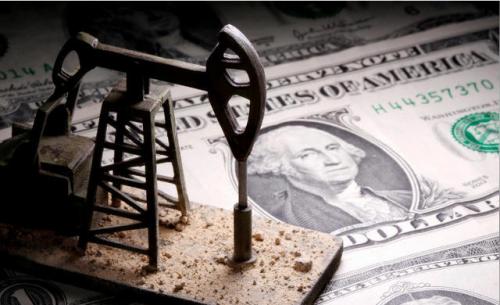New commodity price hikes
Commodity markets have experienced an accelerated recovery in their price levels to above pre-pandemic levels. The question is how to explain this rise and what is the scenario for the desired economic recovery.
- Análisis

The slowdown in production activities caused first in Asia and then in the West by the health measures against the COVID19 pandemic led to a severe fall in commodity prices between January and April 2020. After that, commodity markets have experienced an accelerated recovery in their price levels to above pre-pandemic levels. The question is how to explain this rise and what is the scenario for the desired economic recovery.
With the onset of the COVID19 pandemic and the implementation of the first social isolation measures, and the closure of non-essential economic activities, the financial market collapsed between January and March 2020, and the commodity market started a new cycle of price contraction. Between December 2019 and April 2020, the overall commodity price index fell 30%, with the most severe losses in the mining and energy sectors; oil, for example, lost 70% of its price. This fall in prices can be related more to a contraction in global demand and production levels than to financial markets; however, their behavior has not been independent.
The recovery of commodity prices has had two moments. The first one was the strong liquidity injections into the markets and lowered interest rates in the USA and the European Union between March and April 2020. It halted the fall in the markets while reigniting a financial markets recovery, including the commodities market. This scenario was very favorable for the recovery of all financial markets and the economic outlook of commodity-exporting countries. The effect in Latin America was that Peru, Colombia, Brazil, Chile and Mexico improved.
The second moment came when the upward trend extended beyond the recovery from previous levels throughout 2021. The level of commodity prices had been on a deflationary trend since 2011, which reached its lowest point during the COVID19 crisis. The price level recovered, so far, is similar to that of September 2014. What are the possible explanations for this?
On the one hand, this may be an expression of the rebound in markets triggered by the recovery in output and optimistic economic growth projections. In the latest July 2021 report, the International Monetary Fund projected 6% growth for the world economy, 6.3% for emerging economies, and 5.3% for Latin America and the Caribbean. China, the leading importer of raw materials and one of the few economies that did not have negative growth in 2020, is projected to grow by 8.1%, an essential factor in the boom in these markets.
On the other hand, the COVID19 vaccination process has accelerated. Although with a strong trend of concentration and centralization of more than 97% in advanced and emerging countries (WHO), more than 31% of the world's population has received at least one dose of the vaccine. The only way out of the COVID19 health crisis, and therefore the guarantee of continued economic recovery, is the effectiveness of widespread immunization against the virus. Hence, the current breakthrough in vaccination makes it possible to re-establish productive and commercial activities and, therefore, to increase the demand for raw materials.
An additional trend to the effect of successive liquidity injections in international markets has been maintaining low-interest rates. The lowering of interest rates between February and April 2020, to a level of 0.05%, has been carried throughout 2021. The effect of these measures has been to increase investments into financial markets, including commodity markets. This capital inflow, combined with increased demand, has contributed to maintaining the upward trend in commodity prices.
Overall, the effect of rising commodity prices has been a combination of multiple factors. Their behavior, although presented as a short-term trend, may induce inflationary processes in the long term. As long as production inputs continue to rise in price, input prices will sustain inflationary pressures.
Num.24, Year 2021, August 23rd
- Armando Negrete, Academic Technician, IIEc-UNAM, member of OBELA www.obela.org
Del mismo autor
- El déficit público de EE.UU. y sus efectos globales en el 2021 14/10/2021
- The US public deficit and its global effects in 2021 13/10/2021
- New commodity price hikes 24/08/2021
- Nueva alza de precios en las materias primas 24/08/2021
- The United States after Trump 07/05/2021
- Estados Unidos después de Trump 07/05/2021
- Brexit and Britain’s decline 04/03/2021
- El Brexit y el declive británico 04/03/2021
- The world economy towards the end of 2020 18/11/2020
- La economía mundial hacia fines del 2020 18/11/2020
Clasificado en
Clasificado en:
Poscovid19
- Alastair Crooke 11/01/2022
- Michael Roberts 03/01/2022
- Armando Negrete 24/08/2021
- Boaventura de Sousa Santos 27/07/2021
- Boaventura de Sousa Santos 21/07/2021
